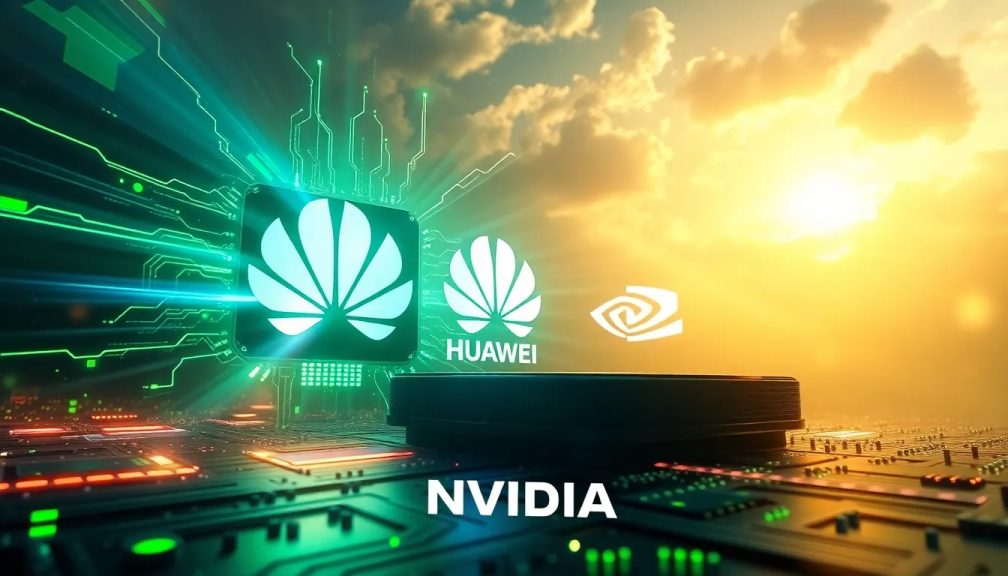Huawei targets NVIDIA with clear AI GPU strategy to double hardware power annually

Huawei is making significant strides in the tech arena, aiming to establish itself as a formidable competitor alongside major players like Intel, NVIDIA, and AMD. With a bold vision for the future of artificial intelligence (AI) and computing power, Huawei recently unveiled its ambitious plan to challenge NVIDIA directly in the heart of AI technology. This announcement marks a crucial turning point for the company, which has been quiet in the tech landscape due to previous sanctions imposed by the United States. Now, Huawei is ready to take center stage with a clear roadmap for its AI-focused GPU and CPU developments.
In a strategic move, Huawei has introduced its plans for its AI GPUs, known as Ascend, and CPUs, called Kunpeng, while also revealing a unique game-changer: their proprietary High Bandwidth Memory (HBM), previously dominated by Micron, SK Hynix, and Samsung. This bold approach signals that Huawei is not merely aiming to react; it is poised to lead the charge in the global tech race.
China's strategic support for Huawei's three-year AI GPU plan
At the Connect 2025 event in Shanghai, Huawei's rotating chairman, Eric Xu, made an emphatic declaration regarding the company's future:
“We will follow an annual launch cycle and double our computing power with each generation,”
These ambitious plans set the stage for Huawei's roadmap: following the release of the Ascend 910C in 2025, the company aims to unveil the Ascend 950 in 2026, the 960 in 2027, and the 970 in 2028. This aggressive timeline is designed to close the gap with NVIDIA by focusing on consistent growth in performance, power, and technological advancements.
One of the standout features of Huawei's plan is the introduction of the Atlas supernodes, engineered to interconnect thousands of chips at unprecedented speeds. The forthcoming Atlas 950 is expected to integrate a staggering 8,192 Ascend GPUs, with its successor, the Atlas 960 set to escalate this number to an impressive 15,488 GPUs. This level of integration exemplifies Huawei's ambition to create unparalleled processing power.
However, the presentation left some critical aspects unsaid: achieving this level of performance will necessitate a continuous accumulation of hardware resources.
Overcoming U.S. limitations through innovation and muscle
Eric Xu expressed confidence in Huawei's ability to surpass competitors in all relevant metrics. The company aims to counteract the restrictions on advanced semiconductor manufacturing with its existing expertise in networking and the robust support of China's energy infrastructure.
The strategy extends beyond GPUs; there are plans for new generations of the Kunpeng server processors set to launch in 2026 and 2028. This indicates that Huawei's vision encompasses the entire spectrum of high-performance computing, from the fundamental chip to cloud solutions.
The stakes in this technological race transcend mere technical supremacy; they also encompass a critical narrative of power. For Beijing, Huawei serves as a prime example of how technological self-sufficiency is not just an idealistic goal but a tangible strategy in action. In this geopolitical chess game, each chip announcement by Huawei is not merely a product advancement but a calculated move within the broader context of global power dynamics.
Huawei's vision: Is it better than NVIDIA's AI chips?
As Huawei gears up to challenge NVIDIA, a pressing question arises: Can Huawei's AI chips truly outperform NVIDIA's offerings? While NVIDIA has established itself as a leader in AI chip technology, particularly with their CUDA architecture and Tensor cores, Huawei is positioning its Ascend GPUs as a viable alternative.
- Performance Metrics: Huawei claims that each generation of Ascend GPUs will provide significant enhancements in processing power and efficiency.
- Integration with Existing Technologies: The ability to seamlessly integrate with Huawei’s existing cloud and networking solutions could provide a competitive edge.
- Cost-Effectiveness: By optimizing manufacturing processes and leveraging local supply chains, Huawei may offer more competitively priced products.
Ultimately, the success of Huawei's strategy will depend on its ability to deliver on these promises and establish a foothold in markets dominated by NVIDIA.
Understanding GPU technology: What are GPUs in AI?
Graphics Processing Units (GPUs) have evolved beyond their original purpose of rendering graphics for video games. In recent years, they have become essential components in various applications, notably in the realm of AI and machine learning. Here’s a brief overview of what makes GPUs so vital in AI:
- Parallel Processing: Unlike traditional CPUs that focus on sequential processing, GPUs are designed to handle multiple tasks simultaneously, making them ideal for the complex calculations involved in AI algorithms.
- High Throughput: GPUs can process vast amounts of data efficiently, which is crucial for training machine learning models on large datasets.
- Energy Efficiency: When optimized for AI tasks, GPUs can perform significantly more calculations per watt than CPUs, making them a more sustainable choice.
As AI continues to advance, the role of GPUs is set to expand, with companies like Huawei pushing the boundaries of what is possible.
What is Huawei's GPU Turbo technology?
Huawei's GPU Turbo technology represents a significant leap in optimizing performance for mobile devices. By enhancing the GPU's processing capabilities, this technology allows for:
- Improved Graphics Performance: Users can enjoy smoother gameplay and enhanced visuals in mobile applications.
- Energy Efficiency: GPU Turbo technology is designed to minimize power consumption while maximizing output, extending battery life.
- Seamless Integration: The technology works across various Huawei devices, providing a consistent performance boost.
This innovation not only enhances user experience but also reflects Huawei's commitment to pushing technological boundaries in mobile computing.
For those interested in visualizing Huawei's advancements, here’s a relevant video that details their ambitious plans:
The competitive landscape: What does NVIDIA have to offer?
As Huawei embarks on this ambitious journey, it is essential to consider what NVIDIA brings to the table. Known for its cutting-edge technology, NVIDIA has pioneered several advancements in the AI chip market:
- CUDA Ecosystem: NVIDIA’s CUDA programming model has become a standard for developing high-performance applications in AI.
- Tensor Cores: These specialized cores are tailored for deep learning tasks, providing significant acceleration in neural network training.
- Robust Software Support: NVIDIA offers a comprehensive suite of software tools and libraries that facilitate AI development, enhancing productivity for developers.
The competition between Huawei and NVIDIA will likely push both companies to innovate further, resulting in exciting advancements in AI technology.



Leave a Reply